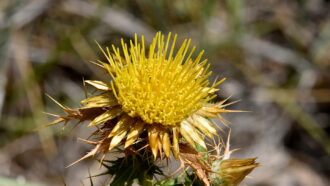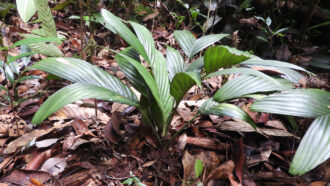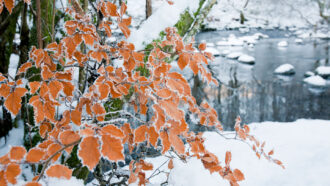Whale-free perfume
Tree gene trick is good news for people who like perfume made without sperm whale waste
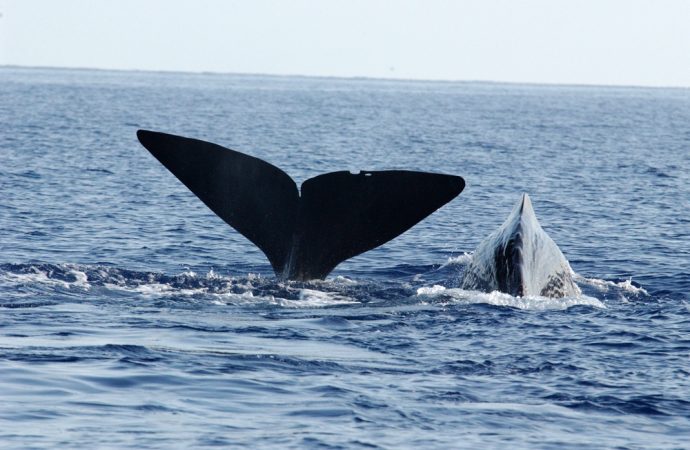
Expensive perfumes come in tiny bottles, but many hide a whale-sized secret.
To perfect a particular smell, perfume makers often use an ingredient that comes from sperm whales with upset tummies. The whale waste, called ambergris, is solid and greasy on its own. But in perfume, ambergris holds all the smelly ingredients together for a long time. People describe its smell as “earthy” and “sweet.”
When a sperm whale eats something sharp, like a cuttlefish beak or fish bones, ambergris coats the object and protects the whale’s innards. But the use of ambergris in perfumes upsets some people who don’t want animal products in their perfumes, even if the ingredient is something the animal wanted to get rid of anyway.
Joerg Bohlmann is neither a perfumer (an expert who crafts perfumes) nor an expert on whales. He’s a plant biologist at the University of British Columbia in Vancouver, Canada. But his studies on plant chemicals point to a new way to make high-end perfume without ambergris. Perfumers in the United States and Europe have already started calling Bohlmann. In the April 6, 2012, edition of The Journal of Biological Chemistry, he and his colleagues showed how one gene — from a tree — might push whales out of the perfume business.
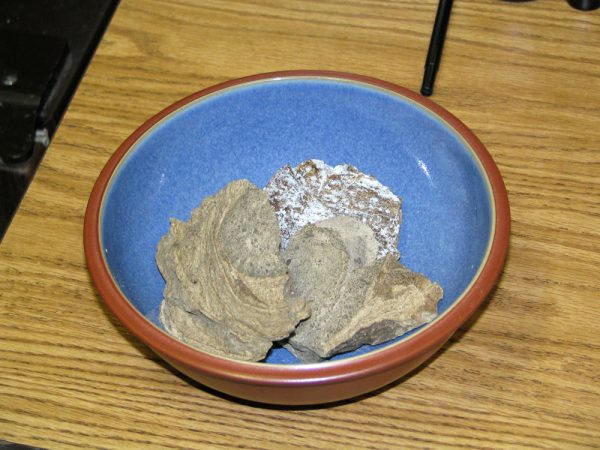
The gene comes from a balsam fir, an evergreen tree that grows in the northeast United States and Canada. (Also, balsam firs make perfect Christmas trees.) The trees produce a chemical that can be used in perfume in place of ambergris — with a catch.
You can’t just walk up to a balsam fir, drill a hole and fill up a cup with the chemical. In nature, it’s mixed with a bunch of other chemicals, so it’s not easy to isolate as a pure compound. Imagine, for instance, trying to isolate sugar from a sweetened breakfast cereal.
“Separation can be a challenge,” Bohlmann says.
This is where science comes in handy. Even before this project, Bohlmann and his colleagues had been studying the genes of conifers, a family of trees that includes evergreens like the balsam fir. When the researchers learned that balsam firs produce the ambergris-like chemical, they decided to use their gene know-how to find it.
A gene is a small segment of DNA, a long and coiled molecule that carries information. Genes are inside almost every cell of every living thing and each gene has a specific purpose. In a balsam fir tree, one particular gene contains the instructions for how to make the ambergris substitute.
Bohlmann and his team found that gene and promptly took it out of the tree cells. Then the researchers did something that might sound strange to someone who doesn’t work in genetics: They put the gene from the tree into yeast cells.
Yeast may sound familiar because it’s used to make things like bread, wine and beer. Biologists like to work with yeast because it easily adopts new genes and changes its behavior. When Bohlmann put the fir tree gene into the yeast, the yeast started making the same chemical that had been produced by the tree.
Perfumers pay big bucks for ambergris because it is a fixative, which means it holds a smell in place on a person’s body.
“Cheap perfumes smell good in the first hour or so and then everything is gone,” explains Bohlmann. More expensive perfumes are much more stable, with their scent lingering on the body for hours or a day after you apply it.
The new chemical, made by yeast with tree genes, can be used as a fixative, too. And using yeast to make the fixative is cheaper than combing beaches for whale waste or looking for it floating in the sea.
Bohlmann, whose research focuses on the chemicals produced by plants, admits he never thought he’d get into the perfume business. But now, he says, fragrance manufacturers have been calling to find out how to use his technology in new scents.
“It’s definitely an interesting by-product of our research,” he says.
Power words
DNA, or deoxyribonucleic acid. A long molecule in nearly all living organisms that carries genetic information. Each molecule of DNA consists of two strands coiled around each other to form a double helix, a structure like a twisted ladder.
gene The basic unit of hereditary information.
cell The smallest structural and functional unit of an organism, typically microscopic.
ambergris A waxlike substance that originates as a secretion in the intestines of the sperm whale, found on beaches or floating in tropical seas and used in perfume manufacture.
sperm whale A toothed whale with a massive head, typically feeding at great depths on squid, formerly valued for the spermaceti and sperm oil in its head and the ambergris in its intestines.

